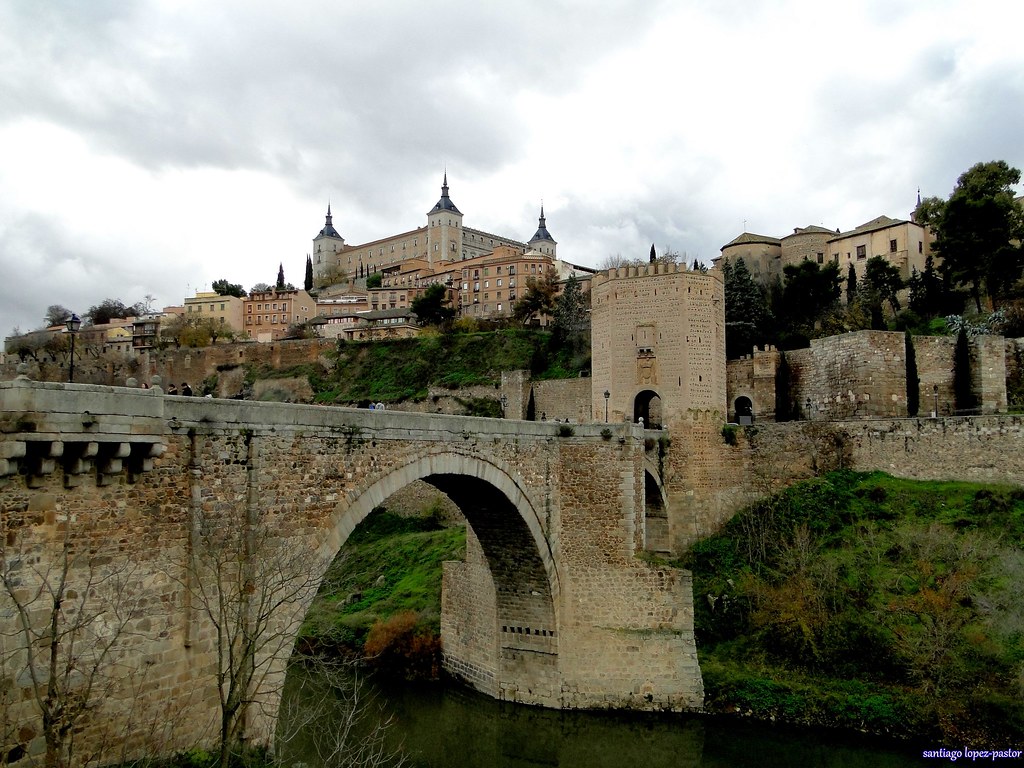Must-see historic sights in Toledo Spain
The city of Toledo in Spain has a very rich history of more than 2000 years. Successively a Roman municipium, the capital of the Visigothic Kingdom, a fortress of the Emirate of Cordoba, an outpost of the Christian Kingdom, and in the 16th century, the temporary seat of supreme power under Charles V. It still has many works of art and architecture of three major religions – Judaism, Christianity and Islam.

Toledo Cathedral
The Primate Cathedral of Saint Mary of Toledo is one of the three 13th-century High Gothic cathedrals in Spain and is considered to be the masterpiece of the Gothic style in Spain.
Read more about Toledo Cathedral
Historic City of Toledo
Successively a Roman municipium, the capital of the Visigothic Kingdom, a fortress of the Emirate of Cordoba, an outpost of the Christian kingdoms fighting the Moors and, in the 16th century, the temporary seat of supreme power under Charles V, Toledo is the repository of more than 2,000 years of history.
Read more about Historic City of Toledo
Monastery of San Juan de los Reyes
Read more about Monastery of San Juan de los Reyes
Santa María la Blanca Synagogue
The Synagogue of Santa María la Blanca was erected in 1180, according to an inscription on a beam, it is disputably considered the oldest synagogue building in Europe still standing.
Read more about Santa María la Blanca Synagogue
Alcázar of Toledo
The Alcázar of Toledo was originally a Roman palace from the 3rd century, but it was restored under Charles I (Holy Roman Emperor Charles V) and his son Philip II of Spain in the 1540s.
Read more about Alcázar of Toledo
El Greco Museum
The El Greco Museum celebrates the mannerist painter El Greco (Domenikos Theotokopoulos, 1541–1614), who spent much of his life in Toledo, having been born in Fodele, Crete. The museum opened in 1911 and is located in the Jewish Quarter of Toledo.
Read more about El Greco Museum
Mosque of Cristo de la Luz
The Mosque of Cristo de la Luz is a former mosque in Toledo. It is the only one of ten that once existed in the city that remains largely as it was in the Moorish period. Legend has it that a shaft of light guided the king to a figurine of the crucified Christ that had been hidden for centuries.
Read more about Mosque of Cristo de la Luz
Puente de Alcántara
The Puente de Alcántara is a Roman arch bridge in Toledo, spanning the Tagus River. The word Alcántara comes from Arabic القنطرة (al-qanţarah), which means 'bridge'. Located at the feet of the Castillo de San Servando, the bridge was originally built by the Romans after they founded the city.
Read more about Puente de Alcántara
Puente de San Martín
Puente de San Martín bridge was constructed in the late 14th century by archbishop Pedro Tenorio to provide access to the old town from the west, complementing the older Puente de Alcántara linking to the east.
Read more about Puente de San Martín
San Servando Castle
Evidence exists of an ancient monastery on the site of San Servando castle, possibly founded in the 7th century. In 1080, Cardinal Richard of St. Victor, a monk of the ancient Abbey of St. Victor in Marseille, was sent as the legate of Pope Gregory VII to the Council of Burgos held that year.
Read more about San Servando Castle
City walls of Toledo
Toledo was walled by Romans, and a lot of its stones were reused later in built walls, as the original perimeter was subsequently tripled. The Visigothic King Wamba renewed the Roman fortifications, sculpting in its gates an inscriptions.
Read more about City walls of Toledo
Hospital de Tavera
The Hospital de Tavera is an important Building of Renaissance style in Toledo. It was built between 1541 and 1603 by order of the Cardinal Tavera. This hospital is dedicated to John the Baptist and also served as pantheon for its patron, Cardinal Tavera.
Read more about Hospital de Tavera
Roman Circus
The Roman Circus of Toledo was built during the 1st century, during the mandate of the emperor Augustus or the emperor Tiberius.
Read more about Roman Circus